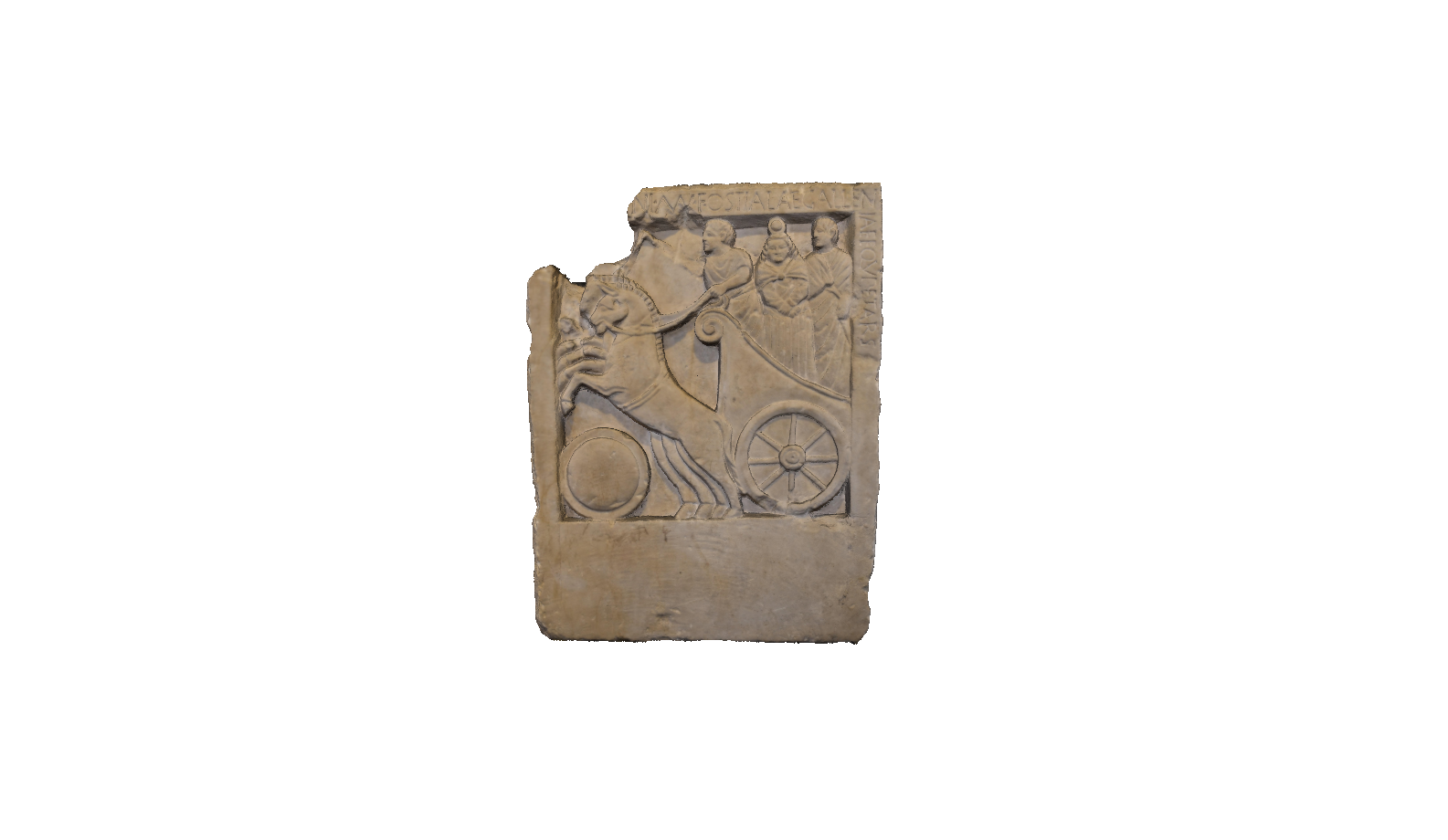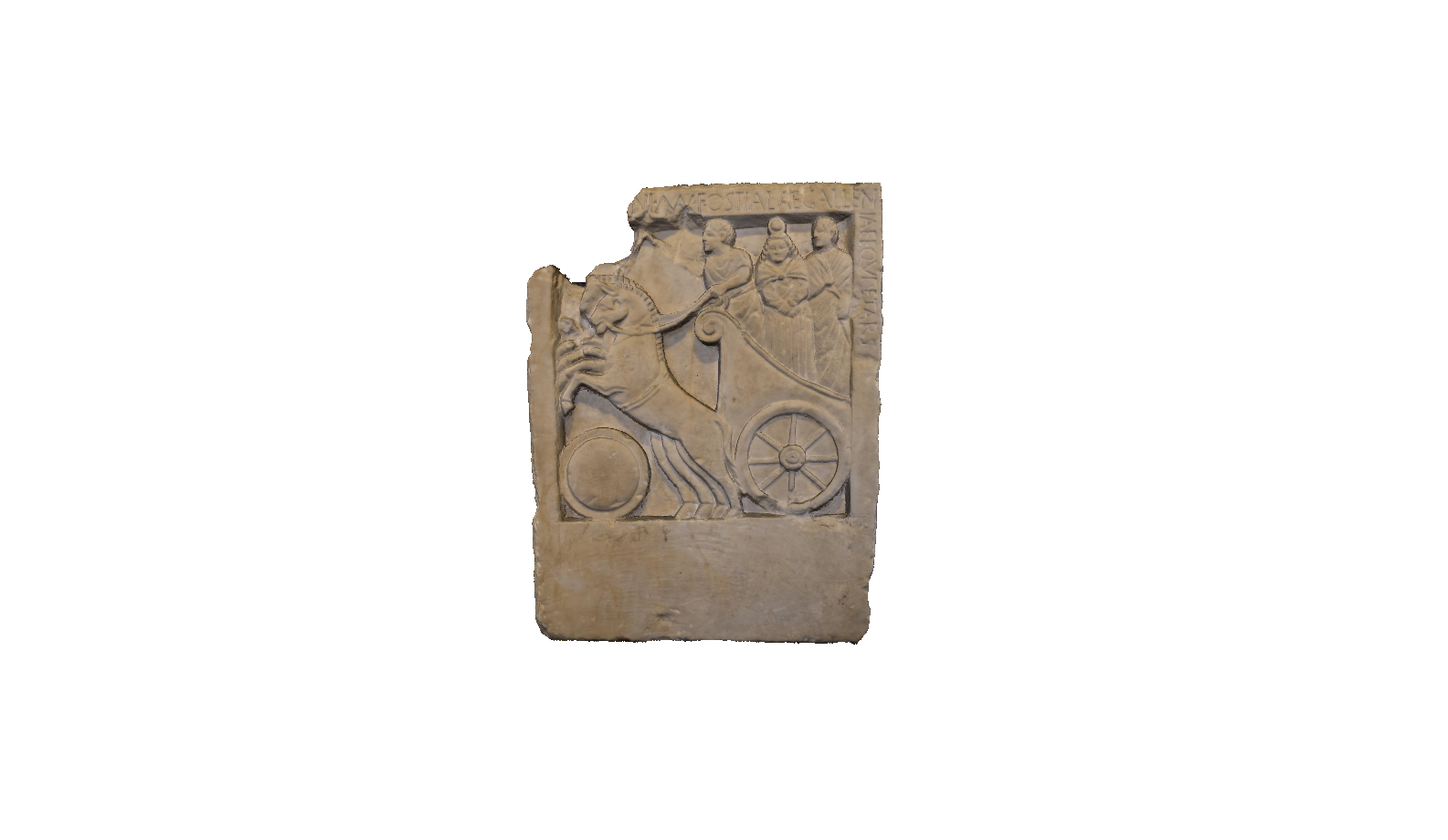Description
Click on the image to go full screen
The Stele was found in 1962 in Via San Massimo, Padua, during an emergency excavation. It is a funerary monument made of limestone from the Berici Hills, and in the central mirror, using the bas-relief technique, three figures standing on a chariot drawn by a pair of horses are illustrated, a classical scene that refers to the journey to the afterlife. The first figure is the charioteer: a man placed in profile, wearing a simple tunic and holding the reins to lead the animals. Behind him are a woman and a man, probably a husband and wife. The man wears the toga, the high-ranking attire of Roman men, while the wife is still in a much more traditional type of iconography, with elements in common with older depictions: she is shown in front, wearing a long-sleeved striped tunic and a cape over her shoulders held by a clasp, and on her head she wears the symbolic disc of Palaeovenetian high-ranking women. There is also a disc under the horses' legs: it is a circular shield, a variant on the typical plant figures placed in the same place in the venetic stelae.
In the upper frame, although fragmentary, an inscription in Latin characters can be read:
[GALLE]NI.M.F.OSTIALAE.GALLEN/IAEEQVPETARS
“[Monument] of equestrian rank of [...] Gallenio son of Manio and Ostiala Gallenia”
Or “[Of Manio (?)] Gallenio son of Manio by Ostiala Gallenia of equestrian rank”
The two translations have quite different meanings: while the first would suggest that the son of the couple wanted to create a monument for both parents, the second may instead be a dedication of only Manio Gallenio, the husband, to his wife Ostiala. This could be confirmed by the gesture: the man wearing a toga is in fact facing his wife, as if bidding her a last farewell before she leaves the world of the living.
What is without doubt, however, is the meaning of this mixed marriage: Gallenio is a Roman, bearing a Latin name and dressed in a toga, while Ostiala is a woman of high rank in Paduan society, her name is typically venetic, as are her dress and the reference to the class of equpetari (or ekvupetari), an aristocracy of 'lords of horses' dating back to a much earlier Veneto.
The importance of the stele is, therefore, in describing a crucial moment in the history of the area: the moment when the Roman presence had already permeated society, but had not yet taken over traditional culture and customs, creating a perfect harmony between different worlds.

